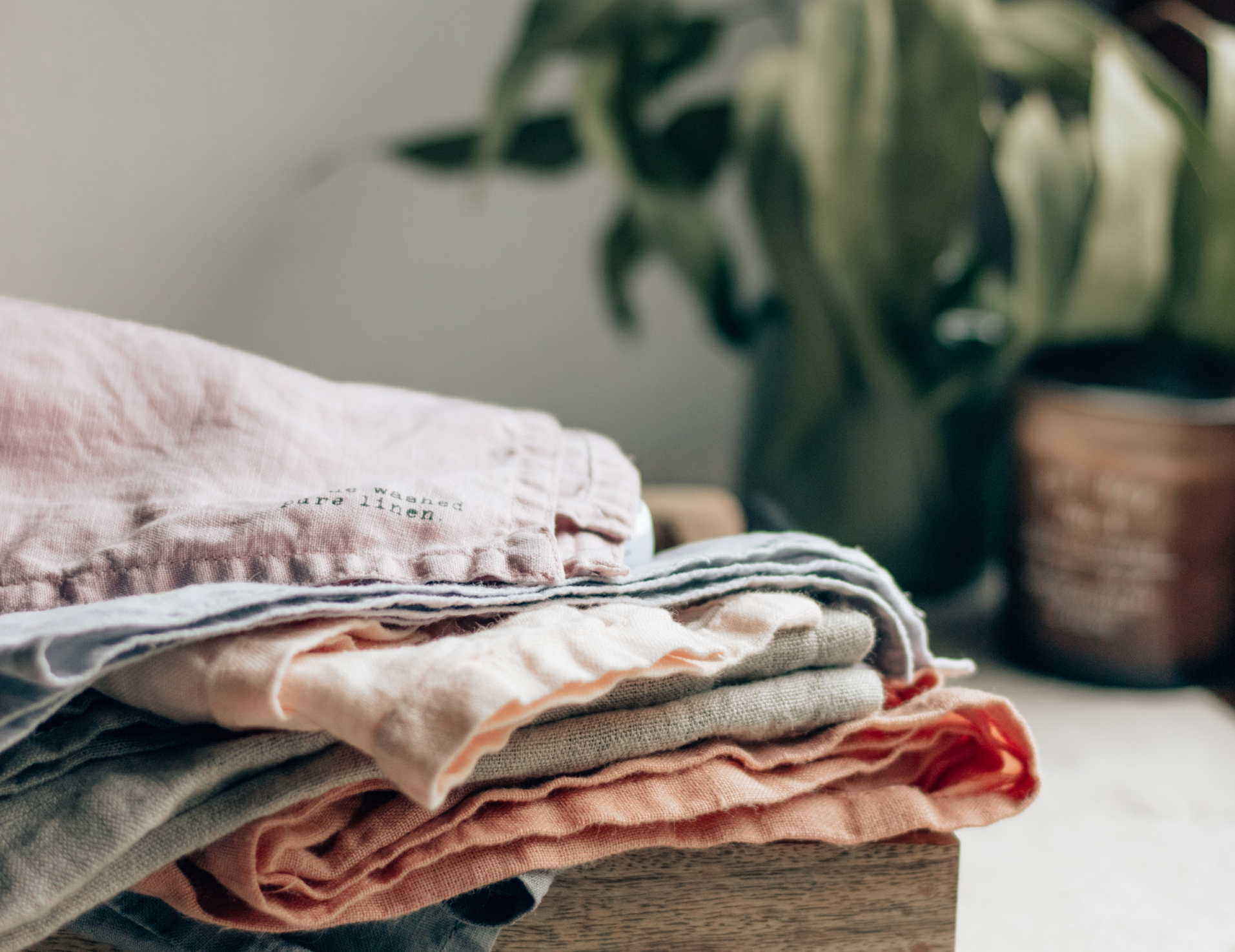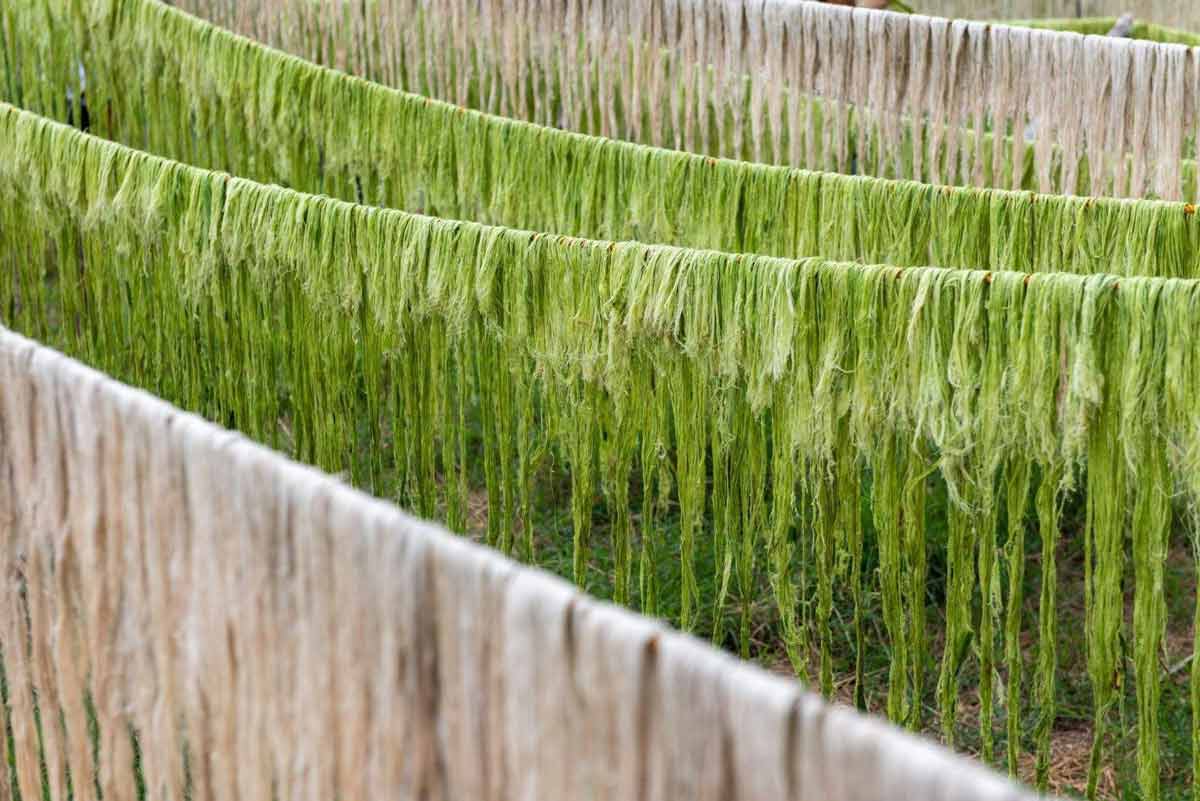
What Are The Most Sustainable Textiles and Materials Today?
Do you know which textiles and materials pollute our environment the least? Here’s what you need to know about the global impact of the fashion industry.
The fashion industry is the second most environmentally damaging and polluting industry according to the UN. It is not a secret that we are living critical moments with our planet because of pollution and when thinking about the different measures to take to reverse this impact we do not think about this industry. “Fashion production makes up 10% of humanity’s carbon emissions, dries up water sources, and pollutes rivers and streams. What’s more, 85% of all textiles go to the dump each year” (UNECE, 2018). Also washing some types of clothes sends significant amount of microplastics into the ocean”, reads The Environmental Cost of Fashion.

WHICH MATERIALS HELP REDUCE THE IMPACT
The speed with which fashion is changing is very serious, as it is very fast in how trends in clothing, accessories, footwear are being updated and mass produced. Using organic textiles such as cotton, Tencel, popylana, hemp, and many others, is one of the solutions as they are biodegradable and can be reused or recycled, Although chemicals and pesticides are sometimes used, reusing or recycling them is not possible.
That is why we must question where the materials come from and understand the damage we are doing as consumers. One way to contribute to stop this damage is buying ethical garments, second hand, reused textiles and require large industries to slow down their mass production, but, how can we identify them? We give you a list of some of the textiles:
ORGANIC COTTON
Cotton is one of the most common fabrics in our wardrobes. It is comfortable, hypoallergenic, breathable and durable. Cotton is the most widely used crop, but it uses more than 10% of the pesticides and more than 25% of the insecticides consumed in the world. Organic cotton, on the other hand, must be certified by independent organizations according to the standards and regulations in force, is harvested by hand to avoid defoliants such as those used in the conventional method, since when harvested by machine the plantation has to be sprayed with chemical herbicides so that the leaves fall off before harvesting.
Benefits of using organic cotton:
-
Improve the quality of life of the people who work on these crops
Reduce the environmental impact by not using insecticides and pesticides.
More resistant and durable
The skin avoids being in contact with toxic chemicals that can cause allergies and damage to health.

RECYCLED NYLON
Nylon is a non-biodegradable material, it can take more than 500 years to be absorbed by nature and some of the chemicals it leaves behind are pollutants, accounts for 10% of the debris in the ocean, 600,000 tons of fishing equipment including nets are discarded in the ocean each year. Recycled nylon represents a higher cost but diverts waste from landfills and its production uses far fewer resources than virgin nylon (including water, energy and fossil fuels). Much of the recycled nylon produced comes from old fishing nets. It is a great solution for diverting trash from the ocean.
Benefits of using recycled nylon in fashion:
-
No petroleum is used in its manufacture
Requires less energy
Its processing emits less CO2
Emissions from incineration are reduced
Can be recycled again at the end of its useful life.
HEMP
Is a vegetable fiber, and is one of the fastest growing plants and does not need much water, energy, pesticides or fertilizers. Hemp needs 50% less water to grow and produces two times more fiber per acre than cotton. It is important to mention that in recent years it has begun to be used in haute couture, but it is not only used to create clothing, it can be used to manufacture many other things, such as paper, biofuels and oils.
Benefits of using hemp in fashion:
-
More resistant and durable.
Antibacterial and antifungal properties, which protect the body and prevent unpleasant odors.
Its sustainability and the benefits that its use brings to the environment.
Its fast growth prevents weeds from growing
Improves soil structure, as it allows a high percentage of nutrients to be recovered to the soil.
Does not fade after washing


VEGAN LEATHER
Vegan leather is a material that seeks to imitate the texture of the traditional leather we are used to in terms of qualities and aesthetics. It is free of animal cruelty so it is not necessary to take the life of an animal to transform it into clothing or footwear. According to Lucy Siegle, environmental journalist and writer, 290 million cows die each year to create the conventional leather we know, and this number could double in the next decade. New alternatives are being developed using biodegradable resources, such as cork, wood, mushrooms, nopal, leaves and fruits of different plants like teak, pineapple or coconut water, soybeans, kombucha, etc., as the main raw materials used in the production.
Benefits of using vegan leather in fashion:
-
They are not required to end the life of any living being.
Requires less water, land, and other scarce resources.
Depending on the type, fewer toxic products or chemicals are used.
It is CO2-free and many have Oeko-Tex certifications.
Their production requires less petroleum than skin treatment.
RECYCLED POLYESTER
Is the most common fiber in our clothing. We can find it in 52% of our clothes. It is synthetic and derived from petroleum, a non-renewable fossil fuel. It takes 200 years to decompose, and when a garment is washed, 700,000 plastic microfibers are released, which end up in rivers and oceans and then in our food chain. There is no difference between recycled polyester and virgin polyester. The performance, durability and benefits are the same but with a lower environmental impact.
Benefits of using recycled polyester in fashion:
-
Does not require the creation of new oil
It is better for the climate, creating 75% less CO2 emissions than virgin polyester.
Post-consumer and post-industrial use.
SHEEP WOOL
Is sustainable because it has several attributes of the concept: it is renewable, biodegradable, recyclable and can be produced organically.
Benefits of using sheep wool in fashion:
-
Wool products have a long shelf life, which means they are used longer than other textile fiber items.
PEACE SILK
Silk is a natural, biodegradable and durable fabric, but it has an environmental impact as it requires a lot of energy. Silk farms must be kept at controlled temperatures, and harvesting the cocoons uses both hot water and hot air. Conventional production kills the worm, so we have as an alternative the “Peace Silk”, which allows the moth to evacuate the cocoon before being boiled to produce silk.
Benefits of using peace silk in fashion:
It is cruelty-free
Allows a complete metamorphosis
-
No pesticides are used
No chemicals are used during the production process.
Is free of toxins and chemicals.
Generally antimicrobial, hypoallergenic and acts as a natural dust mite and fungus repellent.
There are many other eco-friendly textile options out there (check out our article Round-up: 8 Sustainable Fashion Textiles to discover more). We are showing our concerns, so the industry is taking action. Let’s learn how to consume ethically and with less global impact, like knowing “the newest, the freshest, the smartest in sustainable textiles and innovative fabrics”. Check them out on our most read article of the year “New Innovative Sustainable Fabrics You Should Know”.
+ Words: Carmen Espinoza, Luxiders Magazine








